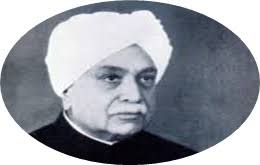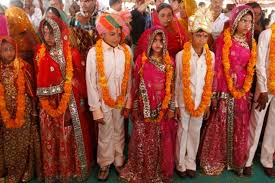.webp)
Saquib Salim
“Hundreds of ladies' meetings have been held in the country; District and Provincial Ladies' conferences have taken place, Ladies Associations and Sabhas representing different communities have met and passed resolutions on this Bill. Three All-India Ladies' Conferences in different parts of the country have met, discussed, and passed resolutions But do you find a single instance of such a public meeting of women protesting against the Bill? With unanimity, which is remarkable and almost astonishing, women all over the country have demanded that this bill be passed without delay. Even the Rajputana Provincial Ladies' Conference, composed in a preponderating degree of Marwari women, which met on the 19th November 1928, emphatically demanded the immediate passing of this Bill. We thus find that half the number of people affected by marriage, and that half, considering the interests at stake, the more important and as is justly said, the better half, wholeheartedly supports the Bill.”
This statement was made by Har Bilas Sarda in the Legislative Assembly on 29 January 1929 while discussing the Age of Consent Bill (later called Child Marriage Restraint Act) more popularly known as the Sarda Bill and later the Sarda Act. The bill aimed at raising the minimum age of consent to sex for women. It must be noted that the original bill talked about the minimum age for consent and not only for marriage. Marital rape was also recognized in the discussions.
The bill faced opposition from orthodox sections of society. However, the biggest surprise came from the so-called ‘progressive’ British Empire, which tried to block this progressive bill. The Indian women organised themselves as a political unit in the controversy which ensued, known as the Sarda Act controversy.
On the one hand, the British Government did not want to upset the orthodox sections, as they were loyal to them, and on the other, they sought recognition as ‘progressive’ to the rest of the world The Home Member of the government noted, “[It is] naturally most desirable to avoid in any way conveying to the Assembly and to the world at large that we were opposed to beneficial social legislation and Government must as far as possible avoid being put in that position.”

Mrinalini Sinha notes, “The Viceroy’s Executive Council opted for a stalling policy that called on officials to adopt “dilatory tactics” in the hope of bringing out the “fissures” over the bill and killing it prematurely in the Assembly.…. Since dilatory tactics had failed to kill the bill in the Assembly, the government, by order of the Executive Council on February 2, 1928, decided to oppose the bill. On February 15, 1928, the secretary of state in London telegrammed his approval of the government's decision.”
Har Bilas Sarda
This is where the Indian women came out of their homes and challenged the government. In an unprecedented fashion, Indian women held public meetings, wrote articles, and organised mass agitations to demand the passing of this bill. All India Women’s Conference, All India Muslim Ladies’ Conference, Women India Association, etc. were already demanding these reforms at a smaller scale but now it has become a public issue.
In 1928, the All-India Child Marriage Abolition League headed by Rani Amrit Kaur of Mandi created public opinion for the Sarda Bill. The government was forced to refer the bill to a 10-member select committee, known as the Joshi Committee, with one woman member. Rameshwari Nehru was appointed on the recommendation of Women's organisations. The committee met thousands of men and women across the country and submitted its report which recommended the adoption of the bill.
Thousands of women, from all religions, met the committee. Interestingly, while the bill originally aimed at Hindu women only, Muslim women forced the assembly to include them as well. Soon, the bill encompassed all Indian women.
Women were ready to rebel against the patriarchal society. This was unheard of. Salima Faiz Tyabji, a Muslim activist from Bombay, when asked, “If the Maulvis of your community give a fatwa to the effect that fixing an age for marriage or an age for consummation is against the Muslim law what would you say?”, replied, “I would ask the lawyers.” On being further probed, “If they do [issue such a ruling] would you submit to the fatwa or rebel?”, she answered diplomatically, “I would better wait for the position to arise.”
Sinha notes, “The AIWC deputation was more blunt in affirming their demands “even if pundits and maulvis object.” Pressed on whether they intended to discard their religions completely, the women were more diplomatic: “We do not discard religion” was their reply. “We do not think it is religion at all.”
Orthodox Hindus, Muslims, and Sikhs all campaigned against the bill. Leaders like Mohammad Ali criticised Begum of Bhopal for supporting the bill and organising public meetings to form a public opinion. But, women were unrelenting. Appeals were issued to the wives, sisters, and mothers of the legislative members to persuade their male relations in support of the bill. Kamaldevi Chattopadhyay, Secretary of AIWC, set up a makeshift office in a corner of the room of the speaker of the assembly so that she could lobby the legislators.
These tactics worked. Several legislators had a change of heart. M. K. Acharya, who initially opposed the bill, publicly acknowledged his later support to the people due to the influence of his wife. Muslim legislators, after initial opposition, voted to add Muslim women to the jurisdiction of the bill. Shareefah Hamid Ali, an office bearer of AIWC, “speculated that they too had been persuaded to the cause by the influence of their wives.”

The main argument of the orthodox people was that the bill intervenes with the injunctions of religious texts. Sarda argued in the assembly, “The women of India do not talk of Sastras; they do not bother themselves about the effect of marriage on their prospects in the next world. They are practical and think of this world, and they want their sufferings in this world should come to an end.”
Women were demanding the rights of citizenship. Sinha points out, “The involvement of women’s organizations with the Sarda Bill, which many contemporaries identified as the beginning of a new “feminist phase” of women’s organizing in India, made for confrontation between the boundaries of the social and the political. Stri Dharma justified the WIA’s stand on politics thus: “Women cannot ban politics anymore,” an editorial claimed, “for social reform and politics are not only interdependent but also because as long as we need to arm ourselves with legislative enactment for social reconstitution, it means we depend upon political instruments for our purposes.”
The Joshi Committee after recording statements of thousands recommended that the minimum age of marriage of girls be raised to 14 with the age of consummation at 15. The age of consent without marriage had to be fixed at 18. Severe punishments were recommended for breaking these laws. Far ahead of its time, the committee recommended women police to deal with women, women judges to try these cases, women doctors to medically examine victims and all proceedings be recorded on camera.
The bill was finally passed in October 1929and the law came into force on 1 April 1930. H. B. Sarda was lauded for this Act by all the women organisations.
Dr. S. Muttulakshmi Reddy, President of AIWC, said, “The Sarda Act for the restraint and ultimate abolition of child marriages which should be given a rank in the list of social legislation next to that for the abolition of Sati, has made his name live forever in our history.”
Even after enacting the law the British government kept putting hurdles in the implementation of the law. Geraldine Forbes in her book Women in Modern India notes, “Enforcement of the Act was practically non-existent. It was difficult to make a charge and difficult to obtain a guilty verdict. Moreover, many of those found guilty were pardoned.”
Yet, she argued, “The Child Marriage Restraint Act had a profound effect on the women’s organizations. It was a consensus issue and this made it easy for women from different regions and communities to work together and for the three national organizations to coordinate their activities….. In the long run, this experience helped women engaged in this campaign appreciate the weakness of their position.”
ALSO READ: Kashmir: Pervez Ahmed Sheikh keeps alive Bijbehara temple, communal harmony
Later, the training helped these women in different movements. Kamla Devi Chattopadhyay, Sarojini Naidu, Begum Jahannara Shahnawaz, etc. who were active in this agitation would go on to play important roles in obtaining the rights for women in India.
